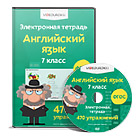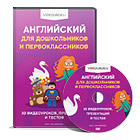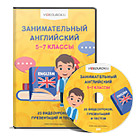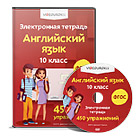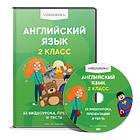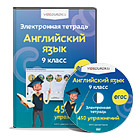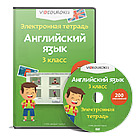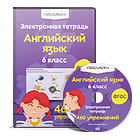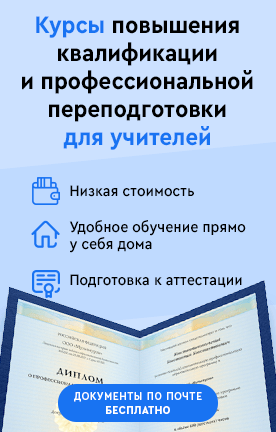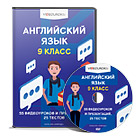разработка урока по английскому языку в шестом классе
- Меню
- Главная
- Дошкольное образование
- Начальные классы
- Астрономия
- Биология
- География
- Информатика
- Математика
- Алгебра
- Геометрия
- Химия
- Физика
- Русский язык
- Английский язык
- Немецкий язык
- Французский язык
- История
- Естествознание
- Всемирная история
- Всеобщая история
- История России
- Право
- Окружающий мир
- Обществознание
- Экология
- Искусство
- Литература
- Музыка
- Технология (мальчики)
- Технология (девочки)
- Технология
- Физкультура
- ИЗО
- МХК
- ОБЖ
- Внеурочная работа
- ОРК
- Директору
- Завучу
- Классному руководителю
- Экономика
- Финансовая грамотность
- Психологу
- ОРКиСЭ
- Школьному библиотекарю
- Логопедия
- Коррекционная школа
- Всем учителям
- Прочее
Создайте Ваш сайт учителя Курсы ПК и ППК Видеоуроки Олимпиады Вебинары для учителей
- Главная
- Английский язык
- Уроки
- A hisrorical figure
A hisrorical figure
Просмотр содержимого документа
«A hisrorical figure»
Specification of Summative Assessment for term
on the subject «The English language»
Grade 10
(natural-mathematical direction)
Nur-Sultan, 2019
CONTENTS
1. Aim of the Summative Assessment for term 3
2. The document defining the content of the Summative Assessment for term 3
3. Expected outcomes on the subject «The English language», Grade 10 3
4. Level of thinking skills on the subject of «The English language», Grade 10 3
5. Administration rules 5
6. Moderation and marking 6
SPECIFICATION OF SUMMATIVE ASSESSMENT FOR TERM 1 7
SPECIFICATION OF SUMMATIVE ASSESSMENT FOR TERM 2 22
SPECIFICATION OF SUMMATIVE ASSESSMENT FOR TERM 3 38
SPECIFICATION OF SUMMATIVE ASSESSMENT FOR TERM 4 55
- Aim of the Summative Assessment for term
Summative assessment (SA) is aimed to assess learners’ success in terms of the learning objectives achievement and reveal their level of knowledge and skills acquired during the term within the framework of updating the upper secondary education content.
Specification describes the content and procedure for the delivery of the Summative Assessment for term in «The English language» in Grade 10.
- The document defining the content of the Summative Assessment for term
Subject Programme for «The English language» for 10-11 grades of upper secondary education of the Natural-Mathematical direction on the updated content.
- Expected outcomes on the subject «The English language», Grade 10
A learner understands the main ideas of authentic texts of a range of genres, conversations on familiar and partially unfamiliar topics; recognises functionally important meanings, including details and specific information to fill in forms, tables, schemes; understands the meaning of terms and the key units of texts on a range of curricular topics and general topics; distinguishes between a fact and an opinion; recognises and compares inconsistencies in medium-length texts of a range of genres and styles on general and curricular topics; deduces the meanings of unfamiliar words using the context.
SpeakingA learner participates in a conversation in situations of formal and informal everyday communication; correctly formulates utterances using the lexical and grammatical resources of the language; expresses an emotional and evaluative attitude to the reality using a previously suggested strategy of oral communication; analyses and compares texts providing arguments to support their point of view; reasons evaluating events, opinions, and problems; makes conclusions and suggests ways to solve a given problem.
ReadingA learner understands the main ideas of fiction and non-fiction texts on familiar and unfamiliar general and curricular topics; uses a range of reading strategies; identifies the time and cause-effect connections of events and phenomena; checks and extends the meanings of words using paper and digital resources; critically evaluates the content of texts of a range of familiar general and curricular topics, and some unfamiliar topics.
WritingA learner plans and makes a brief outline of a written text, edits and proofreads texts of a range of genres and styles; observes spelling and grammar rules; provides arguments in a written text; writes discursive texts expressing an opinion of an issue; writes business letters and other documents; writes essays on a range of familiar general and curricular topics.
- Level of thinking skills on the subject of «The English language», Grade 10
| Strand | Level of thinking skills | Description | Recommended type of question | |
| Listening | Knowledge and comprehension | Recognise the main points in unsupported extended talk; identify specific information in unsupported extended talk; recognise the detail of an argument in unsupported extended talk; | Questions multiple choice answers. Questions require answer. Questions require extended answer. | with that short that an |
| Higher order thinking skills | deduce meaning from context in unsupported extended talk; recognise speaker viewpoints and extent of explicit agreement between speakers; | |||
| Speaking | Application | use formal and informal language registers in talk; use appropriate subject-specific vocabulary and syntax; | Questions require extended answer. | that an |
| Higher order thinking skills | ask and respond to complex questions to get information about a wide range of general and curricular topics; explain and justify own and others’ point of view; evaluate and comment on the views of others in a growing variety of talk contexts; interact with peers to make hypotheses about a wide range of general and curricular topics; navigate talk and modify language through paraphrase and correction in talk; | |||
| Reading | Knowledge and comprehension | recognise main points in extended texts; identify specific information and detail in extended texts; | Questions with multiple choice answers. Questions that require short answer. Questions that require an extended answer. | |
| Higher order thinking skills | deduce meaning from context in extended texts; recognise the attitude or opinion of the writer in extended texts; recognise patterns of development in lengthy texts [inter-paragraph level]; recognise inconsistencies in argument in extended texts; | |||
| Writing | Application | use a growing range of vocabulary, which is appropriate to topic and genre, and which is spelt accurately; write with grammatical accuracy; use style and register to achieve appropriate degree of formality in a growing variety of written genres; write coherently at text level using a variety of connectors; | Questions require extended answer. | that an |
| Higher order thinking skills | use independently appropriate layout at text level on a range of general and curricular topics; | |||
| Use of English | Application | use a variety of quantifiers for countable and uncountable nouns and a variety of noun phrases; use a variety of compound adjectives, adjectives as participles, comparative structures indicating degree, and intensifying adjectives; use perfect continuous forms and a variety of simple perfect active and passive forms including time adverbials … so far, lately, all my life; use a variety of future active and passive and future continuous forms; use a variety of reported statements and question forms; use infinitive forms after an increased number of verbs and adjectives use gerund forms after a variety of verbs and prepositions use a variety of prepositional and phrasal verb; use a wide variety of conjunctions; use if / if only in third conditional structures, use a variety of relative clauses including with which [whole previous clause reference]. | Questions require answer. Questions require extended answer. | that short that an |
During the Assessment cover all visual materials like diagrams, schemes, posters and maps that can serve as prompts for learners.
At the beginning of the Assessment read out the instructions and inform the learners about the assessment duration. Remind learners that they are not allowed to talk with each other during the Summative Assessment. After the instructions, make sure they have understood given instructions and ask if they have any questions before the start of the assessment.
Ensure that learners are working individually and not helping each other. During the Summative Assessment learners should not have any access to additional recourses that can help them, for example, dictionaries (excluding the cases when it is allowed in specification).
Recommend learners to cross the wrong answers instead of using an eraser.
During the assessment you can answer learners’ questions, regarding the instructions and the assessment duration. You should not spell, paraphrase or provide any information that could give the learner an advantage.
Always tell learners that they have 5 minutes left before the end of the Summative Assessment.
Tell learners to stop writing and put down their pens/pencils on the desks at the end of the Summative Assessment.
- Moderation and marking
All teachers use the same version of the mark scheme. During the moderation process it is necessary to check learner sample papers with the marks awarded to ensure there are no deviations from the standardised mark scheme.
SPECIFICATION OF SUMMATIVE ASSESSMENT FOR TERM 1
Review of summative assessment for term 1
Duration of the summative assessment – 40 minutes
Listening – 10 minutes
Reading – 10 minutes
Writing – 20 minutes
Speaking task is conducted separately.
Total marks- 24
The structure of the summative assessment
This sample of Summative Assessment consists of 14 questions: listening, reading, writing and speaking. Different types of tasks are used in the summative assessment for term.
Listening – True/False task on the topic «Science and Scientific Phenomena».
Reading – multiple choice task on the topic «Science and Scientific Phenomena».
Writing – writing a newspaper article on the topics «Science and Scientific Phenomena» and «Natural Disasters».
Speaking – making an individual speech on the topics «Science and Scientific Phenomena» and «Natural Disasters».
Transcript for listening task can be found after the mark scheme.
Characteristic of tasks for summative assessment for term 1
| Unit | Strand | Learning objective | *Total number of questions | *Question № | *Type of question | *Task description | Time | Total marks |
| Science and Scientific Phenomena
Natural Disasters | Listening | 10.2.2 Understand specific information in unsupported extended talk on a wide range of general and curricular topics, including talk on a limited range of unfamiliar topics | 6 | 1 2 3 4 5 6 | True/ False | Each learner works individually. Learners listen to the recording twice on topic «Science and Scientific Phenomena», having chance to look through the questions before the recording starts. The task consists of 6 questions. Learners answer the questions while listening. | 10 minutes | 6 |
| Reading | 10.4.1 Understand main points in extended texts on a wide range of unfamiliar general and curricular topics | 6 | 1 2 3 4 5 6 | Multiple choice Open ended | Each learner works individually. Learners read the text on topic: «Science and Scientific Phenomena» and answer the questions. This task consists of 6 questions with one possible answer. In question 1-3 learners choose the right answer. In questions 4-6 learners give short answers. | 10 minutes | 6 | |
| Writing | 10.5.4 Use style and register to achieve appropriate degree of formality in a growing variety of written genres on a range of general and curricular topics | 1 | 1 | Open ended | Each learner works individually. They write an article for school newspaper. Learners have to choose between two topics to write. Topic 1 is on «Science and Scientific Phenomena». Topic 2 is on «Natural | 20 minutes | 6 |
8
| | | 10.5.7 Use independently appropriate layout at text level on a range of general and curricular topics 10.6.3 Use a variety of compound adjectives, adjectives as participles, comparative structures indicating degree, and intensifying adjectives on a wide range of familiar general and curricular topics | | | | Disasters». They should write with appropriate style, register and layout using a variety of adjectives. They should follow the tips for writing. | | | ||||||
| Speaking | 10.3.1 Use formal and informal language registers in talk on a wide range of general and curricular topics 10.3.4 Evaluate and comment on the views of others in a growing variety of talk contexts on a growing range of general and curricular topics 10.6.11 Use a variety of reported statements and question forms on a wide range of familiar general and curricular topics | 1 | 1 | Open ended | Learners work as a whole class, listening to each other and participating in the discussion agreeing or disagreeing on the topics: «Science and Scientific Phenomena», «Natural Disasters». Learners are provided with some set of questions for a discussion beforehand. They show own points of view on topics, explaining and justifying their positions and answers. Learners should provide answers using appropriate degree of formality and a range of reported statements and question forms. | The whole group speaks for 3040minutes. | 6 | |||||||
| TOTAL: | | | | | 40 minutes (excluding Speaking) | 24 | ||||||||
| Note: * - sections that can be changed | | | | | | | ||||||||
9
Sample questions and mark scheme
Tasks for the Summative Assessment for term 1
LISTENING
Task. Listen to the tape and write if the information is True (T) or False (F).
Follow the link below to listen the audio (listen until 2.06) http://b779011024006a6071c15c160b94f727c0d27cbeccc854542bc6.r78.cf1.rackcdn.com/B1_amazing_facts.mp3
Only about one tenth of the cells in your body are bacteria. _______ [1]
Bacteria are mostly helpful. _______ [1]
Animals need bacteria to digest food. _______ [1]
You have 7 million cells in your body. _______ [1]
Most of the atoms are empty. _______ [1]
Most of the atoms are tiny circles. _______ [1]
Total [6]
READING
Read the article about scientific researches about volcanoes and complete the task below.
Collecting Information about Volcanoes Is Difficult For most volcanoes, we don’t know enough. The last time volcano Agung erupted was in 1963. That was before we had all the tools we have today to measure it. Mount Pinatubo in the Philippines erupted in 1991. Before that, it had not erupted for 500 years. In 1991, two months of changes came before the eruption. Ash burst from the top. The volcano's shape changed. Earthquakes were bigger. They also happened more often. We know more about Mount St. Helens volcano in the U.S. Scientists have watched it for many years. They can now make good predictions about it. They know that if there are small earthquakes happening it will erupt in two weeks. We don’t know exactly what Agung volcano did before its 1963 eruption. These events could mean an eruption is coming in two weeks. Or, it could be months or even years.
Correct Predictions Are Important
Today, we use satellites to study volcanoes. Satellites give scientists a good look at the volcano from space. They can’t give smaller details, though. Satellites usually only pass over a given volcano once every week or two. The other tools we use cost a lot of money. We cannot have them everywhere. Predicting volcanic eruptions correctly is very important. If it erupts before people leave, they could die. They need to know before it happens. What if they leave and the volcano doesn’t erupt? That can be a different problem. This happened in Mammoth Mountain, California, in 1984. People stopped visiting. It cost money for everyone to leave. The community lost millions of dollars. The eruption never happened. To predict eruptions correctly, we need to know about each volcano. Without that, we have to compare with other volcanoes. Nothing beats really getting to know each volcano, though.
(Tracy K.P. Gregg is a professor of geology at the State University of New York at Buffalo.)
Task. Read and choose the best answer A, B, C or D.
What do scientists know about Mount St. Helens volcano? [1]
Small earthquakes will cause eruption.
The shape of the volcano is changed.
The last earthquakes were bigger.
The last eruption was 500 years ago.
Which word could replace the word "predictions" WITHOUT changing the meaning of the first sentence? [1]
“They can now make good predictions about it. They know that if there are small earthquakes happening it will erupt in two weeks.”
answers
guesses
tips
truths
Which question is answered in these sentences? [1]
Predicting volcanic eruptions correctly is very important. If it erupts before people leave, they could die. They need to know before it happens.
How can people predict volcanoes’ eruption?
What can happen if volcanoes erupt earlier than predicted?
What can happen if volcanoes do not erupt at all?
Where are the most dangerous volcanoes located?
Task. Read the text and give a short answer.
What technology is used by scientist today to study volcanoes? [1]
Why do NOT scientists use other kinds of technologies to study volcanoes? [1]
Why is scientific prediction important for people? [1]
Total [6]
WRITING
Task. Choose ONE topic and write an article.
Topic 1. Your school magazine is organising a competition for best articles among school learners. You have to write an article about latest scientific news. Your article should include the following information:
what exactly has happened;
the place where it occurred; - its potential effects/results.
Topic 2. Your school magazine is organising a competition for best articles among school learners. You have to write an article about a deadly natural disaster. Your article should include the following information:
the type of a natural disaster and its description;
the place where it occurred;
the description of its consequences.
Total [6]
SPEAKING
If your group consists of 10-14 students, you can work as a whole group. If your students’ number is more than 15, you need to make two groups for speaking. Beforehand study the rules for Socrates seminar with your learners.
Learners work as a whole class. Learners sit in a circle. Questions for discussion can be handed in advance to learners to have a look and think them over. This set of questions is not compulsory. Feel free to include class-discussed questions. No need to discuss all the suggested questions. Make notes in order to assess your learners and provide effective feedback later.
Work as a whole class or small groups. Choose any question you want to discuss with your peers.
Start your speech. Mind the rules for Socratic seminars. Explain and justify your answers.
Rules for Socratic seminar
Treat one another respectfully.
This is a shared talk, NOT a debate.
Everyone needs to talk AND listen.
Do NOT talk over one another.
Do not raise hands. You can agree or disagree with the speaker on any points you want. Address each other and NOT your teacher. Ask questions. Before asking, “What do you think about it?” tell your own opinion.
Be courageous in presenting your own thoughts and reasoning, but be flexible and willing to change your mind in the face of new and compelling evidence.
Questions for discussion:
How many types of natural disaster can you name? Which is the worst?
What natural disasters are common in your country?
What is the best / worst natural disaster movie you have seen?
Think of three natural disasters. What can you do to stay safe during and after these natural disasters?
What is a difference between a hurricane, a typhoon, and a cyclone?
Which country has the most natural disasters?
Would you ever volunteer to help after a natural disaster hit? If yes, what would you like to volunteer to do? If no, why not?
How can technology lessen the damage caused by natural disasters?
What is your favourite science subject? Biology? Physics? Chemistry? Why?
How will science change the world in the next 100 years?
Do you like science?
What has science done for humankind?
What will science uncover in the next few decades?
What questions will science never answer?
What will the next big discovery in science be?
Why do children at school need to study science?
You can use the following phrases:
In my opinion/It is not my point of view …
I think …
In my view …
I agree with/do not agree with …
I see your point …
I support your view …
I take a different view …
Total [6]
Total marks____/24
Mark scheme
Listening and Reading
| Question № | Answer | Mark | Additional information | |
| Listening | | | ||
| 1 2 3 4 5 6 | False | 1 | F | |
| True | 1 | T | ||
| True | 1 | T | ||
| False | 1 | F | ||
| True | 1 | T | ||
| False | 1 | F | ||
| Reading | | | ||
| 1 2 3 4 5
6 | A | 1 |
| |
| B | 1 |
| ||
| B | 1 |
| ||
| Satellites | 1 |
| ||
| They cost a lot of money | 1 | cost a lot of money they are expensive | ||
| If it erupts before people leave, they could die. | 1 | The same meaning in another word choice | ||
| Total marks | 12 |
| ||
Mark scheme
Writing and Speaking
CRITERIA FOR MARKING WRITINGGive a mark out of 6 for each criterion (content, organisation, vocabulary, grammar and punctuation) and then calculate a mean to give an overall total out of 6. All fractional marks should be rounded up to the closest whole mark.
| Mark / Criterion | Content (relevance and development of ideas) | Organisation (cohesion, paragraphing, and format) | Vocabulary (style and accuracy) | Grammar (style and accuracy) and Punctuation (accuracy) |
| 6 | All content is relevant to the task. The register completely corresponds to the requirements of the task; consistent and intentional misuse of register* may indicate a writer’s personal style. All content points are fully addressed and developed in a balanced way. *Such misuse of register should not harm the format of writing. | Uses a wide range of connectors accurately; referencing is mostly clear. Uses paragraphs to separate ideas; all paragraphs revolve around one idea or a set of like ideas; the size of each paragraph allows for a proper and balanced development of ideas. The format is appropriate. | Uses a range of advanced vocabulary appropriately; uses less common lexical items with occasional inappropriacies. • Has good control of word formation; may make occasional errors in producing less common word forms. Spells common vocabulary items correctly; very few (one or two) occasional spelling mistakes may be present. May occasionally misspell less common lexical items. Errors in word choice and/or spelling do not distort meaning. | Writes simple and compound sentence forms correctly and demonstrates variety in length and complexity. Uses complex sentences accurately, including punctuation. Rare errors in grammar and/or punctuation. |
| 5 | All content is relevant to the task; insignificant content omissions may be present. The register on the whole corresponds to the requirements of the task; occasional and inconsistent misuse of register may be present. Most content points are addressed, but their development | Uses a range of basic connectors accurately and attempts to use more advanced connectors, but not always accurately, and referencing, but not always clearly or appropriately. Uses paragraphs to separate ideas; most paragraphs revolve around one idea or a set of like | Uses a range of everyday vocabulary appropriately; uses less common lexical items, but may make frequent errors. Has good control of word formation; may make errors in producing less common word forms. Spells common vocabulary items correctly; few (no more | Writes simple and compound sentence forms correctly, but does not demonstrate variety in length. Occasional errors in grammar and/or punctuation do not distort meaning. |
| | may be slightly imbalanced. | ideas; the size of each paragraph may reflect imbalanced development of ideas. • The format is appropriate. | than five) occasional spelling mistakes may be present. May often misspell less common lexical items. Errors in word choice and/or spelling do not distort meaning. | |
| 4 | Most content is relevant to the task; insignificant content omissions may be present. The register on the whole corresponds to the requirements of the task. Most content points are addressed, but some content points may be more fully covered than others. | Uses a range of basic connectors accurately. Uses paragraphs to separate ideas, but tends to misuse paragraphing (a script is a set of very short paragraphs or some paragraphs may be much longer than other ones for no apparent reason). The format is generally appropriate. | Uses everyday vocabulary generally appropriately, while occasionally overusing certain lexical items. Has good control of word formation; can produce common word forms correctly. May make infrequent errors in spelling more difficult words. • Errors in word choice and/or spelling rarely distort meaning. | Writes simple and some compound sentence forms correctly. While errors in grammar and/or punctuation are noticeable, meaning is rarely distorted. |
| 3 | • Some content is relevant to the task; significant content omissions may be present. • The register barely corresponds to the requirements of the task. • Only some content points, which are minimally addressed. | Uses some basic connectors, but these may be inaccurate or repetitive. Writes in paragraphs, but may not use them to separate ideas (a script may have random breaks between paragraphs). The format may be inappropriate in places. | Uses basic vocabulary reasonably appropriately. Has some control of word formation; can produce some common word forms correctly. Makes frequent errors in spelling more difficult words, but simple words are spelled correctly. Errors in word choice and/or spelling distort meaning at times. | Writes simple sentence forms mostly correctly. Errors in grammar and/or punctuation may distort meaning at times. |
| 2 | Severe irrelevances and misinterpretations of the task may be present. Only few content points, which are minimally addressed. | • May use a very limited range of basic cohesive devices, and those used may not indicate a logical relationship between ideas. | Uses an extremely limited range of vocabulary. Has very limited control of word formation; can produce a few common word forms | Writes some simple sentence forms correctly. Frequent errors in grammar and/ or punctuation distort meaning. |
| | | Attempts to write in paragraphs, but their use may be confusing (may start every sentence with a new line). The format may be inappropriate. | correctly. Makes many errors in spelling, including a range of simple words. Errors in word choice and/or spelling distort meaning. | |
| 1 | • Attempts the task, but it is largely misinterpreted and the response is barely relevant to the task. | Links are missing or incorrect. Does not write in paragraphs at all (a script is a block of text). The format is not appropriate. | Can only use a few isolated words and/or memorised phrases. Has essentially no control of word formation; can barely produce any word forms. • Displays few examples of conventional spelling. | • No evidence of sentence forms. |
| 0 | Does not attempt the task in any way. OR The response is completely irrelevant to the task. OR There is too little language to assess. OR Content is completely incomprehensible due to extremely poor handwriting: very few words are distinguishable, so there is a lack of context to verify meaning. | |||
CRITERIA FOR MARKING SPEAKING
Give a mark out of 6 for each criterion (development, fluency, and language) and then calculate a mean to give an overall total out of 6.
| Mark / Criterion | Development and Fluency | Language |
| 6 | Produces stretches of language in a register which is appropriate to the situation provided in the task and may opt to vary register to enhance meaning. Shows sustained ability to maintain a conversation and to make relevant contributions at some length. Produces extended stretches of language despite some hesitation. Can respond to change in direction of the conversation. Pronunciation is intelligible. Intonation is appropriate. | Produces error-free simple sentences. Uses complex grammatical forms, but may make errors, which rarely cause comprehension problems. Uses a range of appropriate vocabulary to give and exchange views on a growing range of general and curricular topics. |
| 5 | Produces stretches of language in a register which is appropriate to the situation provided in the task. Responds relevantly and at length which makes frequent prompting unnecessary, resulting in a competent conversation. Produces mostly extended stretches of language despite some hesitation, although instances of using short phrases may be present. Can generally respond to change in direction of the conversation. Pronunciation is generally intelligible. Intonation is generally appropriate. | Produces error-free simple sentences. Uses a range of appropriate vocabulary when talking about a range of general and curricular topics. Occasional mistakes do not cause comprehension problems. |
| 4 | Produces stretches of language in a register which is generally appropriate to the situation provided in the task. • Attempts to respond to questions and prompts. Produces responses which are extended beyond short phrases, despite hesitation. Effort will need to be made to develop the conversation; only partial success will be achieved. Pronunciation is mostly intelligible. May not follow English intonation patterns at times. | Frequently produces error-free simple sentences. Uses appropriate vocabulary to talk about a limited range of general and curricular topics. Errors may cause comprehension problems. |
| 3 | Produces stretches of language without awareness of register. Responses tend to be brief and are characterised by frequent, hesitation. Has to be encouraged to go beyond short responses and struggles to develop a conversation. There is a lack of intelligibility of pronunciation, but it is unlikely to impede communication. May not follow English intonation patterns frequently. | Produces basic sentence forms and some correct simple sentences. Uses a limited range of appropriate vocabulary to talk about a limited range of general topics. Errors are frequent and may lead to misunderstanding. |
| 2 | Responses are so brief that little is communicated. Barely engages in a conversation. Pronunciation may cause some communication difficulty. Does not follow English intonation patterns. | Attempts basic sentence forms, but with limited success. OR Heavily relies on apparently memorised utterances. Uses a limited range of appropriate vocabulary to talk about a very limited range of general topics. Makes numerous errors except in memorised expressions. |
| 1 | • No communication possible. • Pronunciation and intonation patterns cause difficulty for even the most sympathetic listener. | Cannot produce basic sentence forms. Can only produce isolated words and phrases or memorised utterances. |
| 0 | No attempt at the response. OR No rateable language. | |
Transcript
A: Hey, I’m reading this really interesting article about the human body. B: Yeah? Well, we know all about that from biology lessons. A: No, we didn’t learn much at all at school! They’re discovering loads more things all the time. Really amazing things! Did you know that only about one tenth of the cells in your body are really you? The rest are bacteria.
B: What? I’m not really me?
A: No, of course you are you, but you also have millions, or trillions, of bacteria in you. B: Eeeeuuugh! A: No, they’re mostly really helpful. Someone did an experiment to see if animals can live without bacteria, and he found that a lot of them died or had to have a special diet. Animals need bacteria to digest food, you see. So we’re better off with bacteria. B: Unless the bacteria are bad.
A: Unless they are bad, but they’re nearly all good. Oh yeah, and going back to cells, do you know how many cells you have in your body?
B: Quite a lot, I’d say. A good few. A: Yeah, but how many?
B: I don’t know. I’m not mathematical. A: 7 octillion! That’s 7 plus 27 noughts. B: I knew it was a lot.
A: OK, that’s an amazingly huge number, almost impossible to imagine. But the really weird thing is that most of the atoms are empty space, just air or nothingness. And if you took out the empty space, you could fit your body inside a tiny cube which measures one 500th of a centimetre on either side. That’s a box measuring 0.002 of a centimetre on each side. You’d be much too small to see.
B: Mmm, I can imagine that…
19
SPECIFICATION OF SUMMATIVE ASSESSMENT FOR TERM 2
Review of Summative Assessment for term 2
Duration of the summative assessment – 40 minutes
Listening – 10 minutes
Reading – 10 minutes
Writing – 20 minutes
Speaking task is conducted separately.
Total marks - 24
The structure of the summative assessment
This sample of Summative Assessment consists of 14 tasks: listening, reading, writing and speaking. Different types of tasks are used in the Summative Assessment for term.
Listening – multiple-matching and sentence completion tasks on the topic «Virtual Reality».
Reading – multiple-matching and True/ False tasks on the topic «Organic and Non-organic Worlds».
Writing – open-ended task on the topics «Virtual Reality» and «Organic and Non-organic Worlds».
Speaking – making a dialogue on the topics «Virtual Reality» and «Organic and Non-organic Worlds».
Tapescript for listening task can be found in CD3 Tapescript 1. Transcript for listening task can be found after the mark scheme.
20
Characteristic of tasks for summative assessment for term 2
| Unit | Strand | Learning objective | *Total number of questions | *Question № | *Type of question | *Task description | Time | Total marks |
| Virtual Reality Organic and Non-organic Worlds | Listening | 10.2.7 Understand speaker viewpoints and extent of explicit agreement between speakers on a range of general and curricular topics | 6 | 1 2 3 4 5 6 | Multiplematching
Sentence completion | Each learner works individually. Learners listen to the conversation twice on the topic «Virtual Reality» having chance to look through the questions before the recording starts. The task consists of two types of questions: questions 1-5 are matching exercise; question 6 requires a short answer. | 10 minutes | 6 |
| Reading | 10.4.7 Recognise patterns of development in lengthy texts [interparagraph level] on a range of general and curricular topics | 6 | 1 2 3 4 5 6 | Multiplematching
True/ False
| Each learner works individually. Learners read the text on the topic «Organic and Non-organic Worlds» and complete the task. This task consists of 6questions. Questions 1-4 require choosing the right option. In questions 5-6, learners should mark the sentences True/False according to the context. | 10 minutes | 6 | |
| Writing | 10.5.2 Use a growing range of vocabulary, which is appropriate to topic and genre, and which is spelt accurately | 1 | 1 | Openended
| Each learner works individually. Learner should choose one topic out of two to write. The tasks focus on the topics «Virtual Reality»; «Organic and Nonorganic Worlds». They answer | 20 minutes | 6 |
21
| | | 10.6.2 Use a variety of quantifiers for countable and uncountable nouns and a variety of noun phrases on a wide range of familiar general and curricular topics | | | | the questions with explanation. They give full answers to the questions. They use subject related vocabulary and punctuation marks accurately in written paragraphs forms. | | |
| Speaking | 10.3.5 Interact with peers to make hypotheses about a wide range of general and curricular topics 10.3.6 Navigate talk and modify language through paraphrase and correction in talk on a range of familiar general and curricular topics 10.6.8 Use a variety of future active and passive and future continuous forms on a wide range of familiar general and curricular topics | 1 | 1 | Openended
| Learners work in pairs. Learners take turns in asking and answering the questions. They use visual and written prompts for a discussion; learners add each other answers, correct some ideas and give some responses with clearness. The questions are be based on topics «Virtual Reality» and «Organic and Nonorganic Worlds». Teacher can ask additional questions to support learners or cut the number of questions in the cards. | Each pair talks for 2-3 minutes. | 6 | |
| TOTAL: | | | | | 40 minutes (excluding Speaking) | 24 | ||
| Note: * - sections that can be changed | | | | | | | ||
22
Sample questions and mark scheme
Tasks for the Summative Assessment for term 2
LISTENING
Task. Listen to Mia and Ryan talking about computer games. Answer the questions 1-3 while you listen to the recording. Listen and decide who these ideas belong to. Write Mia or Ryan in the spaces provided. CD3 Tapescript 1.
| 1. Does not find strategy games interesting. _________ |
| [1] |
| 2. Considers the game good for collaboration. __________ |
| [1] |
| 3. Enjoys playing a game that involves imagination and pleasant experiences.______ |
| [1] |
| 4. Does not find the game violent. _________ |
| [1] |
| 5. Thinks that Final Fantasy checks your ability of playing. ____________
Task. Complete the sentence according to what you hear. |
| [1] |
| 6. Mia and Ryan agree that they both enjoy playing __________________________
|
| [1] |
Total [6]
READING
What are biofuels?
T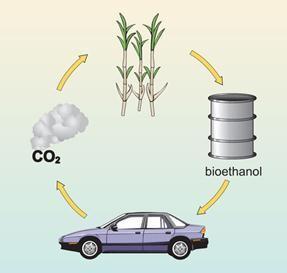 he use of biological material (biomass) as a fuel or lighting material is not new; the earliest evidence for humans using wood for fires is at Gesher Benot Ya'aqov in Israel, 790,000 years ago. However, concern over the impact that the burning of fossil fuels is potentially having on the climate has resulted in renewed interest in biofuels. The difference between fossil fuels and biofuels is that fossil fuels were produced millions of years ago when plants and other organisms died, became buried and were subjected to high temperatures and pressures forming coal, oil or natural gas. Biofuels, on the other hand, are produced from biological material that has been living recently. There are a number of ways in which biofuels can be produced.
he use of biological material (biomass) as a fuel or lighting material is not new; the earliest evidence for humans using wood for fires is at Gesher Benot Ya'aqov in Israel, 790,000 years ago. However, concern over the impact that the burning of fossil fuels is potentially having on the climate has resulted in renewed interest in biofuels. The difference between fossil fuels and biofuels is that fossil fuels were produced millions of years ago when plants and other organisms died, became buried and were subjected to high temperatures and pressures forming coal, oil or natural gas. Biofuels, on the other hand, are produced from biological material that has been living recently. There are a number of ways in which biofuels can be produced.
Some biofuels can be produced from waste material, such as recycled plant oils, whilst others can be produced from plants specially grown for the purpose. Both liquid and gaseous forms of biofuels can be produced from crops that either have a high sugar content, such as sugar cane or sugar beet, or contain starch that can be converted into sugars, such as maize. Plants containing high levels of plant oils, such as oil palm or soybean, can also be used. Wood and its by-products can be converted into a variety of biofuels.
Task. Which paragraph contains the following information? Write Paragraph 1 or 2 next to the sentences below.
The main ways in which humans use biofuels __________ [1]
Fuels can give energy to humans _________ [1]
The main difference between fossils and biofuels __________ [1]
The main ways biofuels can be produced _________ [1]
Task. Mark the sentences True or False.
Biofuels are possible to produce by converting recycled plant materials. ________ [1]
It is not possible to convert trees into a type of biofuels._________ [1]
Total [6]
WRITING
Task. Choose ONE topic to write.
Topic 1. Virtual Reality
Look at the famous icons of mobile applications. Choose two you use more often. Write how and why you use them in your life. Use quantifiers much and many correctly where it is necessary.
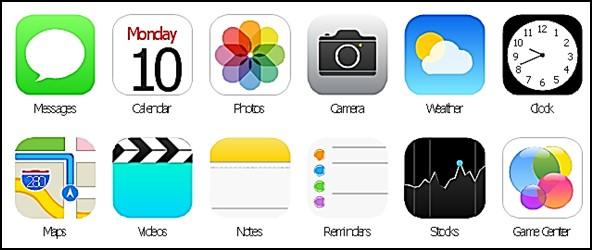
You may use these questions to write:
What are your two chosen apps? How much do you use them and why? Why have you chosen them? What do you use them for? What are pluses of using your chosen apps? How much time do you save with them? How? Are there any possible threats of using mobile apps?
Topic 2. Organic and Non-organic Worlds
Look at the picture below. Use quantifiers some and any correctly where it is necessary.
You may use these questions to write:
What products are named as organic and some are non-organic? Why do you think some products are organic and some non-organic? What farmers should do to have more organic products in the shops? Should the price be equal for both groups? Why do people buy and eat more nonorganic foods?

Total [6]
SPEAKING
Task. You have to work in pairs. Choose one card and discuss questions with your partner. You should collaborate, agree or disagree, showing your point of view. You have one minute to prepare, 2-3 minutes to talk on the topic.
Card 1.Use these questions for discussion:
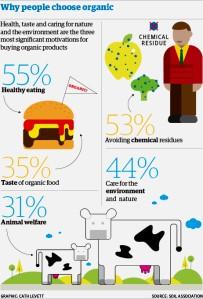
How important is farming in Kazakhstan?
What crops are farmed in Kazakhstan?
Is farming in your country in good conditions? Why or why not?
Why do farmers use pesticides in your opinion?
Do you think practice of intensive farming is bad for people’s health? Why or why not?
Card 2.Use these questions for discussion:
I n what way farming can be dangerous for people?
n what way farming can be dangerous for people?
Is farming dangerous for people in Kazakhstan? Why or why not?
What are the difficulties the farming industry faces today?
Does farming in Kazakhstan help environment? Why? Why not?
What do you think about factory farming?
Card 3.Use these questions for discussion:
H ow many text messages do you send per day? Why?
ow many text messages do you send per day? Why?
Do you know how to use functions on your phone? Give some examples of usage.
What kind of features do your cell phones have?
How long have you had a mobile phone?
How long can you stay without your mobile?
Card 4. Use these questions for discussion:
A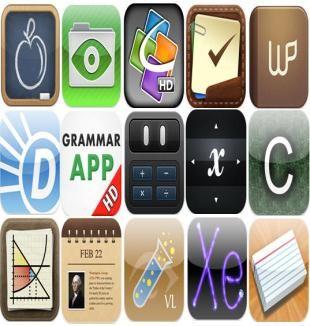 re you allowed to use your mobile switched on in your class? Yes/no/ Why do you think so?
re you allowed to use your mobile switched on in your class? Yes/no/ Why do you think so?
In what way using mobiles in classes can be beneficial.
What disadvantages using mobiles in classes may have?
At what age do kids now get cell phones?
Does it bother you when people use mobiles in public place?
Yes/no. Why?
Total [6]
Total marks____/24
Mark scheme
Listening and Reading
| Question № | Answer | | Mark | Additional information |
| | | Listening | | |
| 1 2 3 4 5 6 | Ryan | | 1 |
|
| Mia | | 1 |
| |
| Ryan | | 1 |
| |
| Ryan | | 1 |
| |
| Ryan | | 1 |
| |
| Need for Speed | | 1 |
| |
| | | Reading | | |
| 1 2 3 4 5 6 | Paragraph 1 | | 1 |
|
| Paragraph 1 | | 1 |
| |
| Paragraph 1 | | 1 |
| |
| Paragraph 2 | | 1 |
| |
| True | | 1 |
| |
| False | | 1 |
| |
| Total marks | | | 12 |
|
Writing and Speaking
CRITERIA FOR MARKING WRITINGGive a mark out of 6 for each criterion (content, organisation, vocabulary, grammar and punctuation) and then calculate a mean to give an overall total out of 6. All fractional marks should be rounded up to the closest whole mark.
| Mark / Criterion | Content (relevance and development of ideas) | Organisation (cohesion, paragraphing, and format) | Vocabulary (style and accuracy) | Grammar (style and accuracy) and Punctuation (accuracy) |
| 6 | All content is relevant to the task. The register completely corresponds to the requirements of the task; consistent and intentional misuse of register* may indicate a writer’s personal style. All content points are fully addressed and developed in a balanced way. *Such misuse of register should not harm the format of writing. | Uses a wide range of connectors accurately; referencing is mostly clear. • Uses paragraphs to separate ideas; all paragraphs revolve around one idea or a set of like ideas; the size of each paragraph allows for a proper and balanced development of ideas. The format is appropriate. | Uses a range of advanced vocabulary appropriately; uses less common lexical items with occasional inappropriacies. • Has good control of word formation; may make occasional errors in producing less common word forms. Spells common vocabulary items correctly; very few (one or two) occasional spelling mistakes may be present. May occasionally misspell less common lexical items. Errors in word choice and/or spelling do not distort meaning. | Writes simple and compound sentence forms correctly and demonstrates variety in length and complexity. Uses complex sentences accurately, including punctuation. • Rare errors in grammar and/or punctuation. |
| 5 | All content is relevant to the task; insignificant content omissions may be present. • The register on the whole corresponds to the requirements of the task; occasional and inconsistent misuse of register may be present. Most content points are addressed, but their development | Uses a range of basic connectors accurately and attempts to use more advanced connectors, but not always accurately, and referencing, but not always clearly or appropriately. Uses paragraphs to separate ideas; most paragraphs revolve around one idea or a set of like | Uses a range of everyday vocabulary appropriately; uses less common lexical items, but may make frequent errors. Has good control of word formation; may make errors in producing less common word forms. Spells common vocabulary items correctly; few (no more | Writes simple and compound sentence forms correctly, but does not demonstrate variety in length. Occasional errors in grammar and/or punctuation do not distort meaning. |
| | may be slightly imbalanced. | ideas; the size of each paragraph may reflect imbalanced development of ideas. • The format is appropriate. | than five) occasional spelling mistakes may be present. May often misspell less common lexical items. Errors in word choice and/or spelling do not distort meaning. | |
| 4 | Most content is relevant to the task; insignificant content omissions may be present. • The register on the whole corresponds to the requirements of the task. Most content points are addressed, but some content points may be more fully covered than others. | Uses a range of basic connectors accurately. Uses paragraphs to separate ideas, but tends to misuse paragraphing (a script is a set of very short paragraphs or some paragraphs may be much longer than other ones for no apparent reason). The format is generally appropriate. | Uses everyday vocabulary generally appropriately, while occasionally overusing certain lexical items. Has good control of word formation; can produce common word forms correctly. May make infrequent errors in spelling more difficult words. • Errors in word choice and/or spelling rarely distort meaning. | Writes simple and some compound sentence forms correctly. While errors in grammar and/or punctuation are noticeable, meaning is rarely distorted. |
| 3 | • Some content is relevant to the task; significant content omissions may be present. • The register barely corresponds to the requirements of the task. • Only some content points, which are minimally addressed. | Uses some basic connectors, but these may be inaccurate or repetitive. Writes in paragraphs, but may not use them to separate ideas (a script may have random breaks between paragraphs). The format may be inappropriate in places. | Uses basic vocabulary reasonably appropriately. • Has some control of word formation; can produce some common word forms correctly. Makes frequent errors in spelling more difficult words, but simple words are spelled correctly. Errors in word choice and/or spelling distort meaning at times. | Writes simple sentence forms mostly correctly. Errors in grammar and/or punctuation may distort meaning at times. |
| 2 | Severe irrelevances and misinterpretations of the task may be present. Only few content points, which are minimally addressed. | • May use a very limited range of basic cohesive devices, and those used may not indicate a logical relationship between ideas. | Uses an extremely limited range of vocabulary. Has very limited control of word formation; can produce a few common word forms | Writes some simple sentence forms correctly. Frequent errors in grammar and/ or punctuation distort meaning. |
| | | Attempts to write in paragraphs, but their use may be confusing (may start every sentence with a new line). The format may be inappropriate. | correctly. Makes many errors in spelling, including a range of simple words. Errors in word choice and/or spelling distort meaning. | |
| 1 | • Attempts the task, but it is largely misinterpreted and the response is barely relevant to the task. | Links are missing or incorrect. Does not write in paragraphs at all (a script is a block of text). The format is not appropriate. | Can only use a few isolated words and/or memorised phrases. Has essentially no control of word formation; can barely produce any word forms. • Displays few examples of conventional spelling. | • No evidence of sentence forms. |
| 0 | Does not attempt the task in any way. OR The response is completely irrelevant to the task. OR There is too little language to assess. OR Content is completely incomprehensible due to extremely poor handwriting: very few words are distinguishable, so there is a lack of context to verify meaning. | |||
CRITERIA FOR MARKING SPEAKING
Give a mark out of 6 for each criterion (development, fluency, and language) and then calculate a mean to give an overall total out of 6.
| Mark / Criterion | Development and Fluency | Language |
| 6 | Produces stretches of language in a register which is appropriate to the situation provided in the task and may opt to vary register to enhance meaning. Shows sustained ability to maintain a conversation and to make relevant contributions at some length. Produces extended stretches of language despite some hesitation. Can respond to change in direction of the conversation. Pronunciation is intelligible. Intonation is appropriate. | Produces error-free simple sentences. • Uses complex grammatical forms, but may make errors, which rarely cause comprehension problems. Uses a range of appropriate vocabulary to give and exchange views on a growing range of general and curricular topics. |
| 5 | Produces stretches of language in a register which is appropriate to the situation provided in the task. Responds relevantly and at length which makes frequent prompting unnecessary, resulting in a competent conversation. Produces mostly extended stretches of language despite some hesitation, although instances of using short phrases may be present. Can generally respond to change in direction of the conversation. Pronunciation is generally intelligible. Intonation is generally appropriate. | Produces error-free simple sentences. Uses a range of appropriate vocabulary when talking about a range of general and curricular topics. Occasional mistakes do not cause comprehension problems. |
| 4 | Produces stretches of language in a register which is generally appropriate to the situation provided in the task. • Attempts to respond to questions and prompts. Produces responses which are extended beyond short phrases, despite hesitation. Effort will need to be made to develop the conversation; only partial success will be achieved. Pronunciation is mostly intelligible. May not follow English intonation patterns at times. | Frequently produces error-free simple sentences. Uses appropriate vocabulary to talk about a limited range of general and curricular topics. Errors may cause comprehension problems. |
| 3 | Produces stretches of language without awareness of register. Responses tend to be brief and are characterised by frequent, hesitation. Has to be encouraged to go beyond short responses and struggles to develop a conversation. • There is a lack of intelligibility of pronunciation, but it is unlikely to impede communication. May not follow English intonation patterns frequently. | Produces basic sentence forms and some correct simple sentences. Uses a limited range of appropriate vocabulary to talk about a limited range of general topics. Errors are frequent and may lead to misunderstanding. |
| 2 | Responses are so brief that little is communicated. Barely engages in a conversation. Pronunciation may cause some communication difficulty. Does not follow English intonation patterns. | Attempts basic sentence forms, but with limited success. OR Heavily relies on apparently memorised utterances. Uses a limited range of appropriate vocabulary to talk about a very limited range of general topics. Makes numerous errors except in memorised expressions. |
| 1 | • No communication possible. • Pronunciation and intonation patterns cause difficulty for even the most sympathetic listener. | Cannot produce basic sentence forms. Can only produce isolated words and phrases or memorised utterances. |
| 0 | No attempt at the response. OR No rateable language. | |
Transcript
Ryan: What are you playing at the moment?
Mia: I’ve just been catching up on how my zoo’s doing in Zoo Tycoon.
Ryan: I’m never sure about those business games. You construct places for the animals to live – and then feed the animals, keep them clean … I mean, it isn’t exactly exciting, is it?
Mia: Yeah! Zoo Tycoon’s really fun. You gather all sorts of cool little things as your zoo grows, you can sell animals to other zoos, or exchange them for different animals. Other players help you out if you need something, and you get points for cooperating with other people.
Ryan: Hmm. I think the slightly old-fashioned graphics put me off!
Mia: I know what you mean, but games like this are about the satisfaction of looking after animals and getting your business to grow.
Ryan: Mmm. I’m really into Final Fantasy, do you know it? Mia: No.
Ryan: OK. So, it’s a fantasy-adventure game. The basic story is quite simple really. You have to try to defeat the bad guys without being caught. But there are lots of different situations you have to deal with, and you can get other characters to help you out.
Mia: I bet it’s violent.
Ryan: Not really. Of course, you have to fight people sometimes, but what I love is all the characters’ movements. You can do a lot more than in most games. You can run up and across walls, and you can dive, and roll along the ground. And crawl under things on your hands and knees. It’s really realistic. And you have to be really precise – you might have to do something like balance on a narrow pipe high up between two buildings. I tell you, it really tests your gaming skills!
Mia: Are you still playing Need for Speed? I thought that was your favourite. Ryan: I still play a bit, but not as much as Final Fantasy.
Mia: You might be surprised to hear my new number one game is … Need for Speed! I’m totally addicted!
Resources
Listening: the task was adapted from Styring J., Tims N. “Prepare! Level 6” Student’s Book, Unit 5 Virtual Action
32
SPECIFICATION OF SUMMATIVE ASSESSMENT FOR TERM 3
Review of summative assessment for term 3
Duration of the summative assessment – 40 minutes
Listening – 10 minutes
Reading – 10 minutes
Writing – 20 minutes
Speaking task is conducted separately.
Total marks- 24
The structure of the summative assessment
This sample of Summative Assessment consists of 14 tasks: listening, reading, writing and speaking. Different types of tasks are used in the Summative Assessment for term.
Listening – open-ended task on the topic «Breakthrough Technologies».
Reading – multiple choice and Yes\No\Not Given tasks on the topic «Reading for Pleasure».
Writing – .open-ended task on the topics «Capabilities of Human Brain» and «Breakthrough Technologies».
Speaking – making a dialogue on the topics «Capabilities of Human Brain» and «Breakthrough Technologies».
Transcript for listening task can be found after the mark scheme.
33
Characteristic of tasks for summative assessment for term 3| Unit | Strand | Learning objective | *Total number of questions | *Question № | *Type of question | *Task description | Time | Total marks |
| Reading for Pleasure
Capabilities of Human Brain
Breakthrough Technologies
| Listening
| 10.2.3 Understand the detail of an argument in unsupported extended talk on a wide range of general and curricular topics, including talk on a limited range of unfamiliar topics | 6 | 1 2 3 4 5 6 | Open ended | Each learner works individually. Learners listen to the recording twice on the topic «Breakthrough Technologies» having chance to look through the questions before the recording start. The task consists of 6 special questions. Questions require answers in three words or a number. | 10 minutes | 6 |
| Reading | 10.4.2 Understand specific information and detail in extended texts on a range of familiar general and curricular topics, and some unfamiliar topics 10.4.9 Recognise inconsistencies in argument in extended texts on a wide range of general and curricular topics | 6 | 1 2 3 4 5 6 | Multiplechoice
Yes\No\ Not Given | Each learner works individually. Learners read the text on the topic «Reading for Pleasure» and complete the task. The task consists of 2 parts: Part 1 is to choose the correct answer from four alternatives A, B, C or D. Part 2 is to find inconsistences in statements and mark them Yes, No, Not Given. | 10 minutes | 6 |
| | Writing | 10.5.3 Write with grammatical accuracy on a range of familiar general and curricular topics 10.5.7 Use independently appropriate layout at text level on a range of general and curricular topics 10.6.16 Use a wide variety of conjunctions on a wide range of familiar general and curricular topics | 1 | 1 | Open ended | Each learner works individually. Learners choose one topic to write about the topic «Capabilities of Human Brain» and «Breakthrough Technologies». Write the response to the question linking paragraphs into coherent text. Learners should use a variety of conjunctions correctly. | 20 minutes | 6 | |||
| Speaking | 10.3.2 Ask and respond to complex questions to get information about a wide range of general and curricular topics 10.3.7 Use appropriate subject-specific vocabulary and syntax to talk about a range of general and curricular topics 10.6.15 Use infinitive forms after an increased number of verbs and adjectives use gerund forms after a variety of verbs and prepositions | 1 | 1 | Open ended | Learners work in pairs. Learners are given one task to produce a two- way conversation on topics: «Capabilities of Human Brain» and «Breakthrough Technologies». Learners are expected to ask questions and respond them by giving opinion and using appropriate topicrelated vocabulary and infinitive/gerund forms. | Learners talk for 2-3 minutes | 6 | ||||
| | | use a variety of prepositional and phrasal verb on a wide range of familiar general and curricular topics | | | | | | | |||
| TOTAL: | | 40 minutes (excluding Speaking) | 24 | ||||||||
| Note: *-sections that can be changed | | | |||||||||
Sample questions and mark scheme
Tasks for the Summative Assessment for term 3
Listening
Task. Listen to the recording and answer the questions. Write NO MORE THAN THREE WORDS or A NUMBER.
Go to this link to listen to the audio https://breakingnewsenglish.com/1109/110907nanotechnology.html
| 1. What did Dr. Charles Sykes and his team create from a single molecule?
|
|
| [1] |
| 2. What was his invention called in the Guinness Book of World Records?
|
|
| [1] |
| 3. In what medical fields will this smallest machine be used?
|
|
| [1] |
| 4. What will Dr. Sykes’ invention produce being the first in the world?
|
|
| [1] |
| 5. What is the speed of motor rotation of this invention?
|
|
| [1] |
| 6. What is Dr. Sykes excited about thinking about his invention?
|
|
| [1] |
Total [6]
Reading
Read the text carefully and answer the questions.
Good Health
M ost people would agree with the definition of good health as being a state where you are free from sickness. People used to only think of their health when they were sick. But these days more and more people are taking measures to make sure that they don't get sick.
ost people would agree with the definition of good health as being a state where you are free from sickness. People used to only think of their health when they were sick. But these days more and more people are taking measures to make sure that they don't get sick.
One of the best things you can do for your body is exercise. But how much is enough? Not everyone agrees on exactly how much people should exercise each day. Some people think that doing simple things like cleaning the house are helpful. Other people do heavy exercise everyday such as running or swimming.
Along with exercise, having a healthy diet can help promote good health. Foods like vegetables and fruits should be eaten several times each day. It is also important to eat foods high in fiber such as beans, grains, fruit and vegetables. Fiber helps your body to digest the food you eat. It also helps your body in other ways such as decreasing the chance of getting cancer, heart disease and diabetes. Avoiding foods with a lot of sugar, salt and fat is a good idea to decrease the possibility of having problems as obesity. Obesity means having so much fat on your body that you are risking your health.
Another factor that affects our health is stress. There are different things that cause stress for different people. Money problems, work and relationships with other people can all cause stress. It can also be caused by good things like getting married or moving into a new house. Exercise and sports are a great way to reduce stress. Other activities like Tai Chi, yoga or taking a walk also help reduce stress. Changing the way you think can also reduce stress. Try living for now, and do not worry about the future.
Task. Choose the correct answer A, B, C or D.
| 1. What is the main idea of the text? Exercising, a healthy diet and reducing stress lead to a healthy life. Knowing the difference between good health and bad health is important. People all over the world have different ideas of what “good health” means. |
| [1] | |||||
| D) Removing stress out of life is important.
| | | | ||||
| 2. Beans, grains, fruit and vegetables are examples of what? A) Foods high in salt and fat. Foods that can cause obesity. Foods that difficult to digest. Foods with lots of fiber.
|
|
|
|
| [1] | ||
| 3. Tai Chi, Yoga and taking a walk are examples of … changing how you think how we live now ways of causing stress ways to reduce stress
Task. Mark these sentences Yes / No / Not Given.
|
|
|
|
| [1] | ||
| 4. You must do difficult exercise for a long time every day to be healthy. ________ |
| [1] | |||||
| 5. Foods high in fiber can protect from serious health problems. ________ |
| [1] | |||||
| 6. Stress can be caused by only negative situations. ________
|
| [1] | |||||
Total [6]
WRITING
Task. Choose ONE of the topics to write.
Topic 1. Robots in the Future
Look at the table below. Three teenagers answered the question ‘Would you be happy to have robots in your life in the future?’ Write the response that will present your own ideas. You can use some ideas from the table. Pay attention at the usage of linking devices.
| Jessica | I think it would be really cool to have a robot to do all the housework in my home. Robots could do all those jobs I hate like doing the washing up and tidying my room. Remember about the 3 d’s – Robots tend to do work that is dirty, dangerous or dull. |
| Steve | I find the idea of robots looking like, and even acting like humans, pretty scary. It is like one of those disturbing futuristic science fiction films. |
| Kim | It’s like any new technology. You have to learn to use it wisely. We will soon get used to more robots in our lives. |
Topic 2. Capability of Human Brain.
Look at the text below. Write the response that will present your own ideas if it is a good or bad idea to change something in human brains. Pay attention at the usage of linking devices. You can use some ideas from the text.
“Researchers found a special gene. It is in mice. It could help us forget painful memories. Many people have painful memories that make them ill. The illness is called post-traumatic stress disorder (PTSD). Researchers want to change painful memories into nice thoughts and feelings. This would help millions of people with PTSD.”
You can use the following linking words:
Further
Furthermore
Moreover
In addition
Additionally
Then
Also
Too
Total [6]
Speaking
Task. Work in pairs. Choose ONE of the cards and answer the questions. You have 1 minute to prepare and 2-3 minutes to speak.
In your speaking you should:
try to keep the conversation going; use topic-related vocabulary; use infinitives and gerunds.
Card 1
What is nanotechnology?
Do you know of any examples of nanotechnology?
When do you think nanotechnology will be a widely used part of our life?
Why do you think people are interested in nanotechnology?
Card 2
What springs to mind when you hear the word ‘nanotechnology’?
What would you like nanotechnology to do?
How excited are you about the future of techonology?
How might nanotechnology help us in the future?
Card 3
What is stress?
What causes stress?
Have you been under stress recently?
How does stress affect you?
Card 4
Do you have a stressful lifestyle?
What stresses you out?
How do you relieve stress?
How can you eliminate stressful situations?
Card 5
What is the most amazing thing about the brain?
What are some extraordinary things some people can do with their brains?
What do you wish your brain was better at?
Do you think humans will ever completely understand the brain? Why or why not?
Card 6
What images spring to mind when you hear the word 'robot'?
If you had a robot, what would you like it to do?
Will robots ever like identical to humans? Why yes/ Why not?
What will happen if robots take over the world one day?
Total [6]
Total marks____/24
Mark scheme
Listening and Reading
| Question № | Answer | Mark | Additional information |
| Listening | | | |
| 1 2 3 4 5 6 | The motor | 1 | Motor |
| The smallest ever | 1 | Smallest/the smallest | |
| nano-surgery, robotic surgery | 1 | Any of two/ surgery | |
| power | 1 |
| |
| 50 times a second | 1 | 50 | |
| The future | 1 | Future | |
| Reading | | | |
| 1 2 3 4 5 6 | A | 1 |
|
| D | 1 |
| |
| C | 1 |
| |
| Not given | 1 |
| |
| Yes | 1 |
| |
| No | 1 |
| |
| Total marks | 12 |
| |
Mark scheme
Writing and Speaking
CRITERIA FOR MARKING WRITINGGive a mark out of 6 for each criterion (content, organisation, vocabulary, grammar and punctuation) and then calculate a mean to give an overall total out of 6. All fractional marks should be rounded up to the closest whole mark.
| Mark / Criterion | Content (relevance and development of ideas) | Organisation (cohesion, paragraphing, and format) | Vocabulary (style and accuracy) | Grammar (style and accuracy) and Punctuation (accuracy) |
| 6 | All content is relevant to the task. The register completely corresponds to the requirements of the task; consistent and intentional misuse of register* may indicate a writer’s personal style. All content points are fully addressed and developed in a balanced way. *Such misuse of register should not harm the format of writing. | Uses a wide range of connectors accurately; referencing is mostly clear. Uses paragraphs to separate ideas; all paragraphs revolve around one idea or a set of like ideas; the size of each paragraph allows for a proper and balanced development of ideas. The format is appropriate. | Uses a range of advanced vocabulary appropriately; uses less common lexical items with occasional inappropriacies. • Has good control of word formation; may make occasional errors in producing less common word forms. Spells common vocabulary items correctly; very few (one or two) occasional spelling mistakes may be present. May occasionally misspell less common lexical items. Errors in word choice and/or spelling do not distort meaning. | Writes simple and compound sentence forms correctly and demonstrates variety in length and complexity. Uses complex sentences accurately, including punctuation. • Rare errors in grammar and/or punctuation. |
| 5 | All content is relevant to the task; insignificant content omissions may be present. The register on the whole corresponds to the requirements of the task; occasional and inconsistent misuse of register may be present. Most content points are addressed, but their development | Uses a range of basic connectors accurately and attempts to use more advanced connectors, but not always accurately, and referencing, but not always clearly or appropriately. Uses paragraphs to separate ideas; most paragraphs revolve around one idea or a set of like | Uses a range of everyday vocabulary appropriately; uses less common lexical items, but may make frequent errors. Has good control of word formation; may make errors in producing less common word forms. Spells common vocabulary items correctly; few (no more | Writes simple and compound sentence forms correctly, but does not demonstrate variety in length. Occasional errors in grammar and/or punctuation do not distort meaning. |
| | may be slightly imbalanced. | ideas; the size of each paragraph may reflect imbalanced development of ideas. • The format is appropriate. | than five) occasional spelling mistakes may be present. May often misspell less common lexical items. Errors in word choice and/or spelling do not distort meaning. | |
| 4 | Most content is relevant to the task; insignificant content omissions may be present. • The register on the whole corresponds to the requirements of the task. Most content points are addressed, but some content points may be more fully covered than others. | Uses a range of basic connectors accurately. Uses paragraphs to separate ideas, but tends to misuse paragraphing (a script is a set of very short paragraphs or some paragraphs may be much longer than other ones for no apparent reason). The format is generally appropriate. | Uses everyday vocabulary generally appropriately, while occasionally overusing certain lexical items. Has good control of word formation; can produce common word forms correctly. May make infrequent errors in spelling more difficult words. • Errors in word choice and/or spelling rarely distort meaning. | Writes simple and some compound sentence forms correctly. While errors in grammar and/or punctuation are noticeable, meaning is rarely distorted. |
| 3 | • Some content is relevant to the task; significant content omissions may be present. • The register barely corresponds to the requirements of the task. • Only some content points, which are minimally addressed. | Uses some basic connectors, but these may be inaccurate or repetitive. Writes in paragraphs, but may not use them to separate ideas (a script may have random breaks between paragraphs). The format may be inappropriate in places. | Uses basic vocabulary reasonably appropriately. • Has some control of word formation; can produce some common word forms correctly. • Makes frequent errors in spelling more difficult words, but simple words are spelled correctly. Errors in word choice and/or spelling distort meaning at times. | Writes simple sentence forms mostly correctly. Errors in grammar and/or punctuation may distort meaning at times. |
| 2 | Severe irrelevances and misinterpretations of the task may be present. Only few content points, which are minimally addressed. | • May use a very limited range of basic cohesive devices, and those used may not indicate a logical relationship between ideas. | Uses an extremely limited range of vocabulary. Has very limited control of word formation; can produce a few common word forms | Writes some simple sentence forms correctly. Frequent errors in grammar and/ or punctuation distort meaning. |
| | | Attempts to write in paragraphs, but their use may be confusing (may start every sentence with a new line). The format may be inappropriate. | correctly. Makes many errors in spelling, including a range of simple words. Errors in word choice and/or spelling distort meaning. | |
| 1 | • Attempts the task, but it is largely misinterpreted and the response is barely relevant to the task. | Links are missing or incorrect. Does not write in paragraphs at all (a script is a block of text). The format is not appropriate. | Can only use a few isolated words and/or memorised phrases. Has essentially no control of word formation; can barely produce any word forms. • Displays few examples of conventional spelling. | • No evidence of sentence forms. |
| 0 | Does not attempt the task in any way. OR The response is completely irrelevant to the task. OR There is too little language to assess. OR Content is completely incomprehensible due to extremely poor handwriting: very few words are distinguishable, so there is a lack of context to verify meaning. | |||
CRITERIA FOR MARKING SPEAKING
Give a mark out of 6 for each criterion (development, fluency, and language) and then calculate a mean to give an overall total out of 6.
| Mark / Criterion | Development and Fluency | Language |
| 6 | Produces stretches of language in a register which is appropriate to the situation provided in the task and may opt to vary register to enhance meaning. Shows sustained ability to maintain a conversation and to make relevant contributions at some length. Produces extended stretches of language despite some hesitation. Can respond to change in direction of the conversation. Pronunciation is intelligible. Intonation is appropriate. | Produces error-free simple sentences. Uses complex grammatical forms, but may make errors, which rarely cause comprehension problems. Uses a range of appropriate vocabulary to give and exchange views on a growing range of general and curricular topics. |
| 5 | Produces stretches of language in a register which is appropriate to the situation provided in the task. Responds relevantly and at length which makes frequent prompting unnecessary, resulting in a competent conversation. Produces mostly extended stretches of language despite some hesitation, although instances of using short phrases may be present. Can generally respond to change in direction of the conversation. Pronunciation is generally intelligible. Intonation is generally appropriate. | Produces error-free simple sentences. Uses a range of appropriate vocabulary when talking about a range of general and curricular topics. Occasional mistakes do not cause comprehension problems. |
| 4 | Produces stretches of language in a register which is generally appropriate to the situation provided in the task. • Attempts to respond to questions and prompts. Produces responses which are extended beyond short phrases, despite hesitation. Effort will need to be made to develop the conversation; only partial success will be achieved. Pronunciation is mostly intelligible. May not follow English intonation patterns at times. | Frequently produces error-free simple sentences. Uses appropriate vocabulary to talk about a limited range of general and curricular topics. Errors may cause comprehension problems. |
| 3 | Produces stretches of language without awareness of register. Responses tend to be brief and are characterised by frequent, hesitation. Has to be encouraged to go beyond short responses and struggles to develop a conversation. • There is a lack of intelligibility of pronunciation, but it is unlikely to impede communication. May not follow English intonation patterns frequently. | Produces basic sentence forms and some correct simple sentences. Uses a limited range of appropriate vocabulary to talk about a limited range of general topics. Errors are frequent and may lead to misunderstanding. |
| 2 | Responses are so brief that little is communicated. Barely engages in a conversation. Pronunciation may cause some communication difficulty. Does not follow English intonation patterns. | Attempts basic sentence forms, but with limited success. OR Heavily relies on apparently memorised utterances. Uses a limited range of appropriate vocabulary to talk about a very limited range of general topics. Makes numerous errors except in memorised expressions. |
| 1 | No communication possible. Pronunciation and intonation patterns cause difficulty for even the most sympathetic listener. | Cannot produce basic sentence forms. Can only produce isolated words and phrases or memorised utterances. |
| 0 | No attempt at the response. OR No rateable language. | |
Transcript
Scientists have made the smallest electric motor ever created. It is a feat of scientific genius that most of us could never even try to understand. Dr. Charles Sykes and his team from America’s Tufts University created the motor from a single molecule just a billionth of a metre wide. Dr Sykes is in contact with the Guinness Book of World Records to have his motor recognised as the smallest ever. The current world-record holder is a 200-nanometre-long nano-tube made from carbon. Dr. Sykes’ creation is an incredible 200 times smaller. Naturally, the researchers hope their creation has uses for mankind. It will be used to power the tiniest machines ever built, and be used by doctors in nano-surgery and robotic surgery.
It is the first time an electric motor has been made from a single molecule. Scientists can make molecules convert energy from light and chemical reactions into movement, but Dr. Sykes’ invention is the first to be classed as a motor – something that can continually generate power. There is some mind-boggling science behind Sykes’ device. A combination of chemicals and metals produces the miniscule motor that rotates 50 times a second. Dr. Sykes was excited about the future of his discovery, saying: "The next thing to do is to get the thing to do work that we can measure - to [link] it to other molecules, lining them up next to one another so they're like miniature cogwheels.”
Resources
Listening: the task was adapted from https://breakingnewsenglish.com/1109/110907nanotechnology.html
47
SPECIFICATION OF SUMMATIVE ASSESSMENT FOR TERM 4
Review of Summative Assessment for term 4
Duration of the summative assessment - 40 minutes
Listening – 10 minutes
Reading – 10 minutes
Writing – 20 minutes
Speaking task is conducted separately.
Total marks- 24
The structure of summative assessment
This sample of Summative Assessment consists of 14 tasks: listening, reading, writing and speaking. Different types of tasks are used in the Summative Assessment for term.
Listening – multiple choice and sentence completion tasks on the topic «Space X».
Reading – multiple choice and open-ended tasks on the topic «Space X».
Writing – open-ended task on the topic «Space X».
Speaking – open-ended task on the topic «Space X».
Transcript for listening task can be found after the mark scheme.
48
Characteristic of tasks for summative assessment for term 4
| Unit | Strand | Learning objective | *Total number of questions | *Question № | *Type of question | *Task description | Time | Total marks |
| Space X
Independent Project | Listening | 10.2.1 Understand the main points in unsupported extended talk on a wide range of general and curricular topics, including talk on a limited range of unfamiliar topics 10.2.6 Deduce meaning from context in unsupported extended talk on a wide range of general and curricular topics, including talk on a limited range of unfamiliar topics | 6 | 1 2 3 4 5 6 | Multiplechoice
Sentence completion | Each learner works individually. Learners listen to the recording twice on topic «Space X», having chance to look through the questions before the recording starts. The task consists of 6 questions with one possible answer. In questions 13 learners choose correct answer from four alternatives A, B, C or D. In questions 4-6 they complete the gaps with no more than two words. | 10 minutes | 6 |
| Reading | 10.4.5 Deduce meaning from context in extended texts on a wide range of familiar general and curricular topics, and some unfamiliar topics 10.4.6 Recognise the attitude or opinion of the writer in extended texts on a wide range of familiar general and curricular topics | 6 | 1 2 3 4 5 6 | Multiple -choice
Openended | Each learner works individually. Learners read the text on the topic «Space X» and answer the questions. The task consists of 6 questions with one possible answer. In questions 1-3 learners find information in the text and choose the correct answer from four alternatives. In questions 4-6 they write the meaning of the phrases. | 10 minutes | 6 |
49
| | Writing | 10.5.6 Write coherently at text level using a variety of connectors on a range of familiar general and curricular topics 10.6.17 Use if / if only in third conditional structures, use a variety of relative clauses including with which [whole previous clause reference] on a wide range of familiar general and curricular topics | 1 | 1 | Open ended | Each learner works individually. Learners write a continuation of the story. They answer the questions in full sentences. In writing, they use appropriate language and own ideas and feelings. Learners should use If in 3rd conditional structure correctly. | 20 minutes | 6 | ||||||
| Speaking | 10.3.3 Explain and justify own and others’ point of view on a wide range of general and curricular topics 10.6.7 Use perfect continuous forms and a variety of simple perfect active and passive forms including time adverbials … so far, lately, all my life, on a wide range of familiar general and curricular topics | 1 | 1 | Open ended | Learners work in pairs, explaining and justifying their viewpoints on topics: «Space X». They answer the questions, agreeing or disagreeing. They show own point of view with a good choice of topical vocabulary. | Each pair talks for 2-3 minutes. | 6 | |||||||
| TOTAL: | | | | | 40 minutes (excluding Speaking) | 24 | ||||||||
| Note: *-sections that can be changed | | | | | | | ||||||||
50
Sample questions and mark scheme
Tasks for the Summative Assessment for term 4
Listening
Task. Listen to the recording and choose the best option A, B, C or D. Use the link to listen: http://www.esl-lab.com/story1/storysc1.htm
Where was the man coming from when he first saw the Unidentified Flying Object (UFO) ? [1] A. He was returning home from a party.
He just got off work when he saw the UFO.
He was driving home from a restaurant.
He was returning home from the school.
What time did the man report the incident to the police? [1]
about 12:00 AM
about 2:00 AM
about 5:00 AM
about 3.00 AM
What jumped out in front of the man's car? [1]
a giant deer
a strange man
a hairy clown
a hairy creature
Task. Fill in the gaps with NO MORE THAN TWO WORDS:
The beast picked up the front of my car and said, "Get out of the car. I'm taking you to
__________________________!" [1]
When I did not get out of the car, the beast opened the car door, carried me on his shoulders to this round-shaped __________________, and well, that is when I woke up alongside the road. [1] 6. We have a great ____________________ that deals with THESE kinds of cases. [1]
Total [6]
Reading
Search for Supernova
S ometimes a star explodes. The explosion is called a supernova. Supernovas are the biggest explosions that happen in space. They are one of the most powerful events in the universe. Usually, changes to planets and stars happen very, very slowly. For example, it took millions of years for our solar system to form. That is a very long time. A supernova, however, happens very quickly. The explosion lasts only about 15 seconds.
ometimes a star explodes. The explosion is called a supernova. Supernovas are the biggest explosions that happen in space. They are one of the most powerful events in the universe. Usually, changes to planets and stars happen very, very slowly. For example, it took millions of years for our solar system to form. That is a very long time. A supernova, however, happens very quickly. The explosion lasts only about 15 seconds.
A galaxy is a system of millions of stars and the planets that circle them. Our solar system is in the Milky Way galaxy. In galaxies like ours, there are two or three supernovas every hundred years. There are many, many galaxies in the universe. Scientists can usually observe a few hundred supernovas every year.
Ingredients for PlanetsSupernovas are important for shooting elements into the universe. Everything in the Universe is made of matter, and matter is made of elements. Huge stars are kind of like factories. The burning core of a star cooks up the elements needed to make everything else in the universe. When a star explodes, it shoots the elements into space. Eventually, the elements form new stars and new planets. These become solar systems, which make up galaxies. The elements are ingredients for making planets, moons, and even us!
Task. Read the questions and choose the best option A, B, C or D.
| 1. Which question is answered in the section "Search for Supernovas"? A. What causes supernovas? Who can discover supernovas? Where do supernovas happen? Why do scientists study supernovas?
| [1] |
| 2. What information do you get from the section "Ingredients for Planets"? details about what kinds of stars can eventually become supernovas facts about how long most supernovas last details about what causes supernovas to happen facts about how supernovas help make other things in the universe
| [1] |
| 3. Which detail from the article BEST states its MAIN idea? A. A galaxy is a system of millions of stars and the planets that circle them. Everything in the Universe is made of matter, and matter is made of elements. There are many, many galaxies in the universe. Supernovas are one of the most powerful events in the universe.
Task. Explain what these numbers state in the text. Example: A few hundred number of supernovas observed every year
| [1] |
| 4. millions years _________________________________________ | [1] |
| 5. every hundred years _______________________________________ | [1] |
| 6. 15 seconds _______________________________________________ | [1] |
Total [6]
Writing
Task. Read the beginning of the story and continue it. Open the brackets in the final sentence correctly.
It is the year 3034. We are on our way to visit unknown planet Bibblebop in a faraway galaxy. Our huge spaceship flies for months past planets, stars and galaxies. At last, we have arrived. We open a door and look out – this planet is very green. There is an alien behind the tree. He is very scary… (why he feels some terror, what happened next)
(Express your feelings to this planet and people, write the end of your story)
If we (decide) to make a living at this planet some years ago, we (have) so many problems now.
Total [6]
SPEAKING
Students work in pairs. They are suggested two pictures (as the example below) to show own point of view on suggested ideas. They ask and answer to the questions of each other.
Card 1
You can see two pictures. Discuss with your friend the topic of the pictures. Ask questions, agree or disagree. You have 1 minute to prepare your speech and 2-3 minutes to speak. Questions can help you to organise your answer.


Would you like to travel into space? Why or why not?
What do you think about space tourism?
How important is learning about space?
Which planet in our solar system is the smallest?
Which planet in our solar system is closest to the sun?
Which planet in our solar system is farthest from the sun?
Card 2
You can see two pictures. Discuss with your friend the topic of the pictures. Ask questions, agree or disagree. You have 1 minute to prepare your speech and 2-3 minutes to speak. Questions can help you to organise your answer.
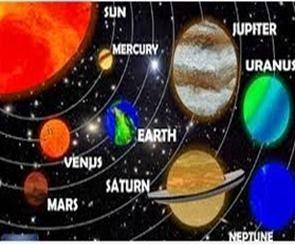

Will humans ever travel to different solar systems? Why or why not?
What is the most interesting thing you know about space?
Have you ever seen any of the following movies: ET, Alien, Star Wars? Which one is your favorite? Why?
Which planet in our solar system would you most want to visit?
How is the Earth unique in our solar system?
Do you think life exact on other solar systems?
Total [6]
Total marks____/24
Mark scheme
Listening and Reading
| Question № | Answer | Mark | Additional information |
| | Listening | | |
| 1 2 3 4 5 6 | A | 1 |
|
| C | 1 |
| |
| D | 1 |
| |
| my master | 1 |
| |
| flying saucer | 1 |
| |
| Therapist | 1 |
| |
| | Reading | | |
| 1 2 3 4 5 6 | C | 1 |
|
| D | 1 |
| |
| D | 1 |
| |
| our solar system took … to form | 1 | Learners may use another choice of words to convey their ideas. The answer is accepted if its meaning is right according to the context. | |
| There are two or three supernovas. | 1 | ||
| The explosion of a Supernova lasts… | 1 | ||
| Total marks | | 12 |
|
Mark scheme
Writing and Speaking
CRITERIA FOR MARKING WRITINGGive a mark out of 6 for each criterion (content, organisation, vocabulary, grammar and punctuation) and then calculate a mean to give an overall total out of 6. All fractional marks should be rounded up to the closest whole mark.
| Mark / Criterion | Content (relevance and development of ideas) | Organisation (cohesion, paragraphing, and format) | Vocabulary (style and accuracy) | Grammar (style and accuracy) and Punctuation (accuracy) |
| 6 | All content is relevant to the task. The register completely corresponds to the requirements of the task; consistent and intentional misuse of register* may indicate a writer’s personal style. All content points are fully addressed and developed in a balanced way. *Such misuse of register should not harm the format of writing. | Uses a wide range of connectors accurately; referencing is mostly clear. • Uses paragraphs to separate ideas; all paragraphs revolve around one idea or a set of like ideas; the size of each paragraph allows for a proper and balanced development of ideas. The format is appropriate. | Uses a range of advanced vocabulary appropriately; uses less common lexical items with occasional inappropriacies. • Has good control of word formation; may make occasional errors in producing less common word forms. Spells common vocabulary items correctly; very few (one or two) occasional spelling mistakes may be present. May occasionally misspell less common lexical items. Errors in word choice and/or spelling do not distort meaning. | Writes simple and compound sentence forms correctly and demonstrates variety in length and complexity. Uses complex sentences accurately, including punctuation. • Rare errors in grammar and/or punctuation. |
| 5 | All content is relevant to the task; insignificant content omissions may be present. The register on the whole corresponds to the requirements of the task; occasional and inconsistent misuse of register may be present. Most content points are addressed, but their development | Uses a range of basic connectors accurately and attempts to use more advanced connectors, but not always accurately, and referencing, but not always clearly or appropriately. Uses paragraphs to separate ideas; most paragraphs revolve around one idea or a set of like | Uses a range of everyday vocabulary appropriately; uses less common lexical items, but may make frequent errors. Has good control of word formation; may make errors in producing less common word forms. Spells common vocabulary items correctly; few (no more | Writes simple and compound sentence forms correctly, but does not demonstrate variety in length. Occasional errors in grammar and/or punctuation do not distort meaning. |
| | may be slightly imbalanced. | ideas; the size of each paragraph may reflect imbalanced development of ideas. • The format is appropriate. | than five) occasional spelling mistakes may be present. May often misspell less common lexical items. Errors in word choice and/or spelling do not distort meaning. | |
| 4 | Most content is relevant to the task; insignificant content omissions may be present. • The register on the whole corresponds to the requirements of the task. Most content points are addressed, but some content points may be more fully covered than others. | Uses a range of basic connectors accurately. Uses paragraphs to separate ideas, but tends to misuse paragraphing (a script is a set of very short paragraphs or some paragraphs may be much longer than other ones for no apparent reason). The format is generally appropriate. | Uses everyday vocabulary generally appropriately, while occasionally overusing certain lexical items. Has good control of word formation; can produce common word forms correctly. May make infrequent errors in spelling more difficult words. • Errors in word choice and/or spelling rarely distort meaning. | Writes simple and some compound sentence forms correctly. While errors in grammar and/or punctuation are noticeable, meaning is rarely distorted. |
| 3 | Some content is relevant to the task; significant content omissions may be present. The register barely corresponds to the requirements of the task. • Only some content points, which are minimally addressed. | Uses some basic connectors, but these may be inaccurate or repetitive. Writes in paragraphs, but may not use them to separate ideas (a script may have random breaks between paragraphs). The format may be inappropriate in places. | Uses basic vocabulary reasonably appropriately. • Has some control of word formation; can produce some common word forms correctly. • Makes frequent errors in spelling more difficult words, but simple words are spelled correctly. Errors in word choice and/or spelling distort meaning at times. | Writes simple sentence forms mostly correctly. Errors in grammar and/or punctuation may distort meaning at times. |
| 2 | Severe irrelevances and misinterpretations of the task may be present. Only few content points, which are minimally addressed. | • May use a very limited range of basic cohesive devices, and those used may not indicate a logical relationship between ideas. | Uses an extremely limited range of vocabulary. Has very limited control of word formation; can produce a few common word forms | Writes some simple sentence forms correctly. Frequent errors in grammar and/ or punctuation distort meaning. |
| | | Attempts to write in paragraphs, but their use may be confusing (may start every sentence with a new line). The format may be inappropriate. | correctly. Makes many errors in spelling, including a range of simple words. Errors in word choice and/or spelling distort meaning. | |
| 1 | • Attempts the task, but it is largely misinterpreted and the response is barely relevant to the task. | Links are missing or incorrect. Does not write in paragraphs at all (a script is a block of text). The format is not appropriate. | Can only use a few isolated words and/or memorised phrases. Has essentially no control of word formation; can barely produce any word forms. • Displays few examples of conventional spelling. | • No evidence of sentence forms. |
| 0 | Does not attempt the task in any way. OR The response is completely irrelevant to the task. OR There is too little language to assess. OR Content is completely incomprehensible due to extremely poor handwriting: very few words are distinguishable, so there is a lack of context to verify meaning. | |||
CRITERIA FOR MARKING SPEAKING
Give a mark out of 6 for each criterion (development, fluency, and language) and then calculate a mean to give an overall total out of 6.
| Mark / Criterion | Development and Fluency | Language |
| 6 | Produces stretches of language in a register which is appropriate to the situation provided in the task and may opt to vary register to enhance meaning. Shows sustained ability to maintain a conversation and to make relevant contributions at some length. Produces extended stretches of language despite some hesitation. Can respond to change in direction of the conversation. Pronunciation is intelligible. Intonation is appropriate. | Produces error-free simple sentences. Uses complex grammatical forms, but may make errors, which rarely cause comprehension problems. Uses a range of appropriate vocabulary to give and exchange views on a growing range of general and curricular topics. |
| 5 | Produces stretches of language in a register which is appropriate to the situation provided in the task. Responds relevantly and at length which makes frequent prompting unnecessary, resulting in a competent conversation. Produces mostly extended stretches of language despite some hesitation, although instances of using short phrases may be present. Can generally respond to change in direction of the conversation. Pronunciation is generally intelligible. Intonation is generally appropriate. | Produces error-free simple sentences. Uses a range of appropriate vocabulary when talking about a range of general and curricular topics. Occasional mistakes do not cause comprehension problems. |
| 4 | Produces stretches of language in a register which is generally appropriate to the situation provided in the task. • Attempts to respond to questions and prompts. Produces responses which are extended beyond short phrases, despite hesitation. Effort will need to be made to develop the conversation; only partial success will be achieved. Pronunciation is mostly intelligible. May not follow English intonation patterns at times. | Frequently produces error-free simple sentences. Uses appropriate vocabulary to talk about a limited range of general and curricular topics. Errors may cause comprehension problems. |
| 3 | Produces stretches of language without awareness of register. Responses tend to be brief and are characterised by frequent, hesitation. Has to be encouraged to go beyond short responses and struggles to develop a conversation. There is a lack of intelligibility of pronunciation, but it is unlikely to impede communication. May not follow English intonation patterns frequently. | Produces basic sentence forms and some correct simple sentences. Uses a limited range of appropriate vocabulary to talk about a limited range of general topics. Errors are frequent and may lead to misunderstanding. |
| 2 | Responses are so brief that little is communicated. Barely engages in a conversation. Pronunciation may cause some communication difficulty. Does not follow English intonation patterns. | Attempts basic sentence forms, but with limited success. OR Heavily relies on apparently memorised utterances. Uses a limited range of appropriate vocabulary to talk about a very limited range of general topics. Makes numerous errors except in memorised expressions. |
| 1 | • No communication possible. • Pronunciation and intonation patterns cause difficulty for even the most sympathetic listener. | Cannot produce basic sentence forms. Can only produce isolated words and phrases or memorised utterances. |
| 0 | No attempt at the response. OR No rateable language. | |
Transcript
Police Officer: Hello. 24th Precinct. Officer Jones speaking.
Man: Help. Yeah, uh, it was wild, I mean bizarre.
Police Officer: Calm down sir! Now, what do you want to report?
Man: Well, I'd like to report a UFO sighting.
Police Officer: A what?
Man: What do you mean "what?" An unidentified flying object!
Police Officer: Wait, tell me exactly what you saw.
Man: Well, I was driving home from a party about three hours ago, so it was about 2:00 AM, when I saw this bright light overhead.
Police Officer: Okay. And then what happened?
Man: Oh, man. Well, it was out of this world. I stopped to watch the light when it disappeared behind a hill about a kilometer ahead of me.
Police Officer: All right. Then what?
Man: Well, I got back in my car and I started driving toward where the UFO landed.
Police Officer: Now, how do you know it was a UFO? Perhaps you only saw the lights of an airplane [No], or the headlights of an approaching car [No]. Things like that happen, you know.
Man: Well if it was that, how do you explain "the BEAST"?
Police Officer: What do you mean, "The BEAST"?
Man: Okay. I kept driving for about five minutes when all of a sudden, this giant, hairy creature jumped out in front of my car. Police Officer: Oh, yeah. Then what?
Man: Well, then, the beast picked up the front of my car and said, "Get out of the car. I'm taking you to my master!" Something like that.
Police Officer: Wow? A hairy alien who can speak English! Come on!
Man: I'm not making this up, if that's what you're suggesting. Then, when I didn't get out of the car, the beast opened the car door, carried me on his shoulders to this round-shaped flying saucer, and well, that's when I woke up alongside the road. The beast must have knocked me out and left me there.
Police Officer: Well, that is the best story I have heard all night, sir. Now, have you been taking any medication, drugs, or alcohol in the last 24 hours? You mentioned you went to a party.
Man: What? Well, I did have a few beers, but I am telling the truth.
Police Officer: Okay, okay. We have a great therapist that deals with THESE kinds of cases.
Man: I am not crazy.
Police Officer: Well, we'll look into your story. Thank you.
Resources
Listening: the task was adapted from http://www.esl-lab.com/story1/storysc1.htm
60
Подтверждение авторства
Пожалуйста, введите ваш Email.
Если вы хотите увидеть все свои работы, то вам необходимо войти или зарегистрироваться
Полезное для учителя
* Свидетельство о публикации выдается БЕСПЛАТНО, СРАЗУ же после добавления Вами Вашей работы на сайт
